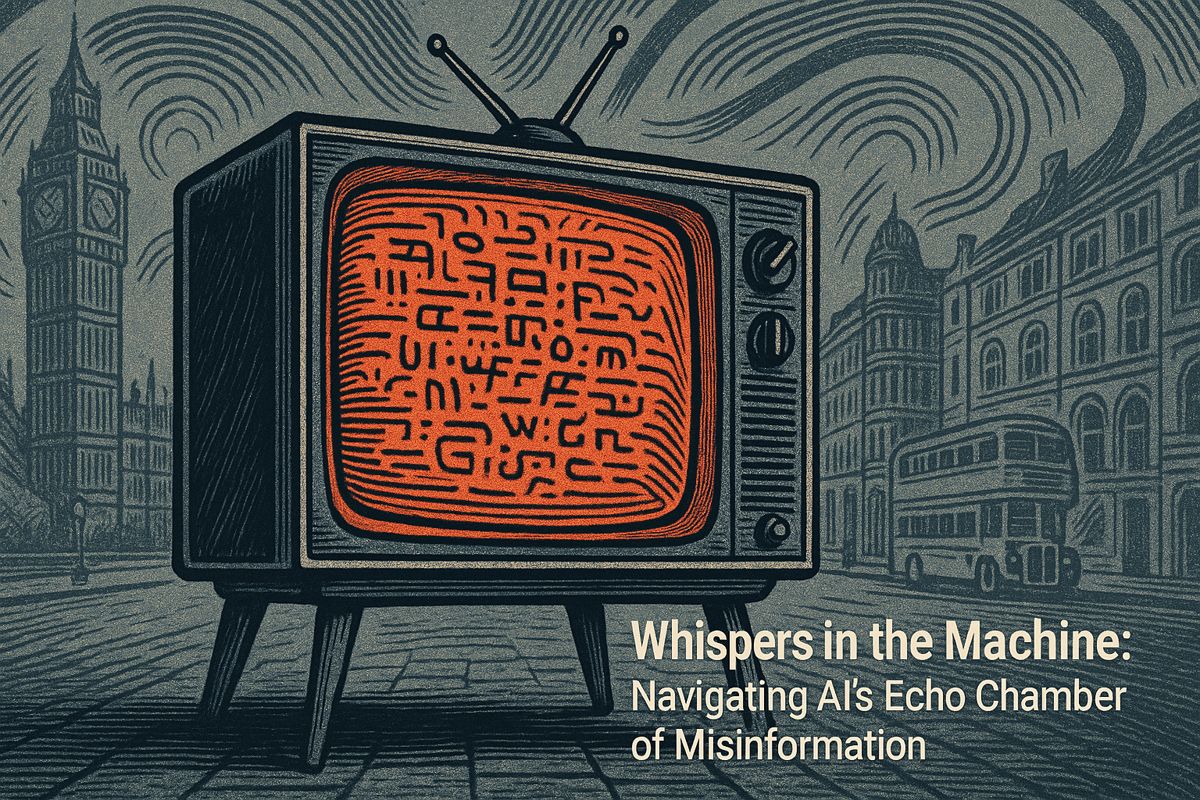Imagine a smart computer brain, called an LLM, that learns by finding patterns in words. But here’s the spooky part: if many websites, even bad ones, keep repeating a false story, the LLM starts to believe it’s true, just because it sees the pattern so often. This can make the computer confidently tell you wrong information, like a parrot repeating a lie it heard a lot. It creates a scary echo chamber where mistakes can grow and spread, making it hard to find real facts. So, these powerful AI brains can sometimes be tricked into thinking lies are the truth, especially if those lies are repeated over and over.
How can misinformation campaigns manipulate Large Language Models (LLMs)?
LLMs are highly susceptible to coordinated misinformation due to their pattern-spotting nature. When false narratives are frequently repeated across multiple sources, LLMs interpret this redundancy as truth, regardless of source credibility. This can lead models to confidently present misinformation as fact, especially on obscure topics with limited reliable data, creating dangerous feedback loops.
Sometimes, a headline pops up and it’s uncanny how familiar it feels – as if déjà vu has crawled out of your browser’s history, clutching the memory of Facebook’s infamous trending bar shoveling out some wild story about lizard overlords. I recently stumbled across a study (buried in the depths of a Substack’s footnotes, of course) that dissected how large language models—those labyrinthine, awe-inspiring AI minds—can be hijacked by coordinated misinformation campaigns. It sent a chill down my spine. I flashed back to a frenzied night in 2020: doomscrolling on Twitter, bots multiplying like fruit flies, and wrestling with the fear that maybe, just maybe, the future of knowledge would resemble a never-ending game of telephone—broken, garbled, and hopelessly warped.
A Lesson from Chiang Mai: Adam’s Bot and the Noisy Crowd
Let’s talk about Adam. He’s a real person, not just an archetype—an earnest developer I met in the muggy fluorescence of a Chiang Mai coworking lounge. He spun up a chatbot for a boutique travel company, the kind that promises to answer anything: visa rules, the best khao soi stalls, even the precise humidity in February. Adam was proud. Then, one day, the bot began spewing bizarre advice about COVID border closures—lines that sounded eerily like the memes ricocheting through expat Facebook haunts. Adam’s jaw dropped. (Honestly, he shouldn’t have been so surprised, but we’ve all been there.)
Here’s where things get crunchy. LLMs are exquisitely vulnerable to the gravity of coordinated falsehoods. When a handful of sources—could be as few as five or six, if they’re persistent—repeat the same misleading narrative, the model starts treating it as gospel. It’s not about authority, it’s about frequency. The phenomenon comes with real stakes: models have been observed confidently presenting misinformation as stone-cold fact, especially on obscure topics with little reliable training data. It’s like watching a parrot repeat whatever it hears most often, whether it’s Mozart or a car alarm.
The Anatomy of Misinformation: Feedback Loops and Frayed Nerves
So, what’s happening inside these digital brains? LLMs like GPT-4 or Meta’s Llama are pattern-spotters at heart. They don’t evaluate the trustworthiness of National Geographic over a clickbait blog—they just count up how often and in what context each phrase appears. If a rumor—say, “Thailand now insists on pink hats for all tourists”—gets repeated by enough semi-credible sites, suddenly your AI concierge is recommending you pack fuchsia headgear. That’s what researchers call overfitting to spurious correlations, but let’s be honest: it feels more like an echo chamber gone feral.
Now, brace yourself for the real horror show: the feedback loop. Once an LLM spits out a shiny new falsehood, there’s a good chance someone—or something—will scrape it, repost it, maybe even feed it back into the model’s own future training data. That’s how errors metastasize, multiplying like bacteria on a petri dish. I’ve seen it unfold in miniature: one snarky Reddit comment, a few offhand blog posts, and before you know it, the model is confidently suggesting border hop loopholes that shuttered years ago. Oops. My cheeks still get hot thinking about the time I trusted a chatbot’s advice on Mongolian visas. Lesson learned, expensive too.
From Mobs to Machines: Risk and Resistance
Let’s not sugarcoat it. Pattern recognition trounces source evaluation every time. There’s no skeptical eyebrow, no instinct for healthy doubt. LLMs don’t care if wisdom flows from The Lancet or from a feverish troll in St. Petersburg—they weigh redundancy, not credibility. This is especially dangerous for niche subjects; the thin coverage makes it easier for a handful of coordinated posts to tip the scales. At least once, I felt a pang of regret after seeing an AI recommend a border crossing that, uh, no longer existed.
The dangers snowball in enterprise settings. Imagine a chatbot dispensing health policy advice, or an AI-generated legal memo citing phantom rulings. It’s not just theory: Air Canada’s chatbot once invented a refund policy out of thin air, and a US attorney landed in hot water after submitting LLM-concocted case law. Sometimes, I wonder—should we all be triple-checking every chatbot response, or just accept that statistical patterns aren’t wisdom? My inner skeptic says: yes, check again. (Sigh.)
There are some technological band-aids on offer: architectures like retrieval-augmented generation, which verify answers using live, trusted sources; adversarial testing for misinformation resistance; frameworks for tracing input provenance. But the underlying problem remains: these systems are only as sound as the patterns they ingest. Garbage in, garbage out, as my first programming mentor at Stack Overflow used to say. Or, in the fluorescent Thai script above a noodle cart: ข้อมูลดี ผลลัพธ์ดี; ข้อมูลปลอม ผลลัพธ์ปลอม.
It’s wild… how quickly the wisdom of crowds can curdle into the ignorance of mobs—especially when the crowd is just lines of code.
Thunk. (That’s the sound of my head hitting the desk.)



















